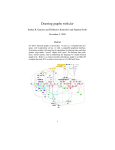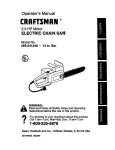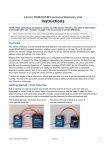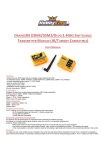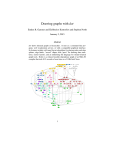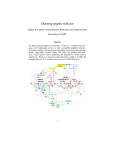Download Lemon Rx User Manual
Transcript
! ! Revised!July!17,!2015! Lemon&7(channel&Stabilized&Receiver& Instructions& ! Contents! The!Lemon!DSMX!Receiver!with!Integrated!Stabilizer!...............................................................................!2& Basic!Instructions!for!Using!the!Lemon!Stabilized!Receiver!....................................................................!2& A!More!Detailed!Look!at!the!Stabilized!Receiver!and!its!Use!...................................................................!8& What!a!Rate!Stabilizer!Does.!...............................................................................................................................!8& Number!of!Transmitter!Channels!.....................................................................................................................!8& Binding!.........................................................................................................................................................................!9& Failsafe!.......................................................................................................................................................................!10& Orientation!of!the!Receiver!Unit!....................................................................................................................!10& What!the!LEDs!mean!–!in!more!detail!.........................................................................................................!11& Aerials,!Satellites!and!Range!Checking!........................................................................................................!11& Master!Gain!Control!.............................................................................................................................................!12& Using!an!Open!Source!Transmitter!(Taranis,!9XR,!etc.)!......................................................................!13& Mixing!and!the!Lemon!Stabilized!Receiver!...............................................................................................!13& Recalibrating!the!Gyros!......................................................................................................................................!15& Versions!of!the!Lemon!Stabilized!Receiver!...............................................................................................!17& ! Lemon!DSMX!7:Channel!Stabilizer!Instructions!v.2.1.3! 1! ! ! Revised!July!17,!2015! The-Lemon-DSMX-Receiver-with-Integrated-Stabilizer-The!Lemon!7:channel!stabilized!receiver,!shown!above,!is!expressly!designed!as!a!“simple”! integrated,!full!range,!DSMX!receiver!and!rate:gyro!stabilizer!for!electric!models.1!! This!receiver!is!not!an!autopilot!or!self:leveling!device.!It!will!not!fly!the!plane!for!you.!It!is! designed!simply!to!smooth!out!flight!and!thus!make!flying!in!wind!and!turbulence!a!pleasure! rather!than!a!risk.!! The!Lemon!stabilizer!is!very!small!and!light.!Despite!its!low!cost,!it!offers!both!high!quality! and!high!performance.!A!Lemon!DSMX!satellite!receiver!can!be!added!to!further!improve! performance.!A!dual!antenna!“diversity”!version!is!also!available.! The!unit!automatically!switches!from!DSMX!to!DSM2!and!so!will!work!with!any!Spektrum!or! compatible!transmitter!of!five!channels!or!more,!including!the!basic!DX4e!and!DX5e!units,!as! well!as!computer!transmitters!such!as!DX6,!DX7,!DX8!and!DX9.!It!can!also!work!with!open! source!transmitters!such!as!Taranis!and!Turnigy!9XR!using!an!add:on!DSM2!or!DSMX! module.!The!unit!provides!mixing!capability!for!elevon!(delta)!and!V:tail,!and!supports!dual! aileron!and!flaperon!functions.! The!first!part!of!this!document!provides!basic!instructions!for!installing!and!adjusting!the! Lemon!stabilizer.!For!many!users,!the!Basic!Instructions!section!should!supply!all!necessary! information.!! The!second!part!of!the!document!provides!more!detailed!information!on!various!aspects!of! operation!and!should!be!consulted!as!necessary.! Basic-Instructions-for-Using-the-Lemon-Stabilized-ReceiverNOTE:!These!basic!instructions!assume!you!are!using!a!Spektrum!transmitter.!If!you!are! using!an!open!source!firmware!transmitter,!such!as!a!Taranis!or!9XR,!see!page!13.! They!also!assume!you!are!using!a!transmitter!with!seven!channels!or!less!and!thus!do!not! have!access!to!Master!Gain!(channel!8).!Stabilization!will!work!normally!but!without!the! ability!to!adjust!gain!in!flight.!See!page!12!for!information!on!Master!Gain.! 1.#Set#up#the#transmitter## If!using!a!computer!transmitter,!set!up!a!new!model.!Disable!any!elevon!(delta)!or!V:tail! mixing!–!if!these!mixes!are!required,!they!must!be!done!in!the!stabilizer!(see!page!13).!Make! sure!control!throws!(end!points/limits)!are!set!to!100%!(80%!for!open!source!firmware! transmitters,!see!page!13).! 2.#Bind#the#receiver# Bind!the!receiver!to!the!transmitter!in!the!normal!way.!If!you!are!using!a!satellite!it!must!be! connected!during!this!process.!Completion!of!the!bind!is!indicated!by!solid!lights!on!the! receiver!(and!satellite!if!used).!Be!sure!to!turn!off!both!receiver!and!transmitter!and!remove! the!bind!plug!after!binding.!For!details,!see!page!9.! !!!!!!!!!!!!!!!!!!!!!!!!!!!!!!!!!!!!!!!!!!!!!!!!!!!!!!!! 1!The!picture!shows!a!v3!or!v4/4.5!receiver.!The!v2!Stabilizer!is!physically!different!and!lacks!the!plastic!case.! See!page!17!for!version!details.!A!very!similar!end:pin!version!is!also!available,!as!well!as!a!dual!antenna! diversity!version.! Lemon!DSMX!7:Channel!Stabilizer!Instructions!v.2.1.3! 2! ! ! Revised!July!17,!2015! 3.#Test#the#receiver#in#non8stabilized#mode! Check!that!all!stabilizer!switches!are!in!the!OFF!position.!2!Turn!on!the!transmitter!and!then! the!receiver.!Check!that!both!green!and!red!LEDs!next!to!the!connectors!are!on,!indicating! that!the!receiver!is!operating!properly!in!non:stabilized!mode.!! Temporarily!plug!a!servo!into!each!of!the!Ail,!Ele,!and!Rud!outputs!and!check!that!they! operate!normally!in!response!to!the!correct!transmitter!sticks.!Power!off.! 4.#Test#the#receiver#in#stabilized#mode## Set!switches!J4!and!J5!to!the!ON!position.!Power!on!the!transmitter!and!receiver.!Check!that! the!green!LED!is!ON!and!that!the!red!LED!goes!OFF!when!you!move!the!Gear!switch.!The! stabilizer!is!operating!when!only!the!green!LED!is!ON!(i.e.,!red!LED!ON!=!stabilizer!OFF).! Power!off.! HINT:!For!troubleshooting,!plug!a!servo!into!the!Gear!pins!(channel!5)!on!the!stabilizer.!The! servo!should!move!through!about!80?90˚!when!the!Gear!switch!is!toggled.! 5.#Mount#the#receiver#in#the#plane## Install!the!stabilizer!flat!in!the!fuselage,!aligned!with!the!center!line!and!with!the!pins!at! either!back!or!front.!The!bottom!of!the!stabilizer!should!be!mounted!firmly!to!the!aircraft! using!the!supplied!double:sided!tape.!If!using!a!satellite,!mount!it!away!from!the!stabilizer,! with!the!antenna!wires!straight!and!at!right!angles!to!the!main!receiver!antenna!(see!page! 11).!If!using!the!dual!antenna!diversity!version!of!the!stabilizer,!ensure!that!the!active! portions!of!the!two!antennas!(the!silver!section!about!31mm!long)!are!approximately!at! right!angles!to!each!other.!Take!care!not!to!kink!the!cable.! Make!sure!you!can!access!the!three!gain!pots!on!the!receiver,!as!you!will!need!to!adjust! them,!perhaps!repeatedly.! Note!that!the!receiver!can!be!mounted!upright!or!inverted!with!the!servo!connectors!at!front! or!back.!It!will!not!work!properly!if!mounted!across!the!fuselage,!on!edge,!tilted!forward!or! backward,!or!at!an!angle!to!the!center!line.!This!receiver,!unlike!many!other!stabilizers,!does! not!need!to!be!mounted!very!close!to!the!center!of!gravity!of!the!model.!Both!receiver!and! satellite!(if!used)!must!be!firmly!attached.!See!page!10!for!more!detail!on!receiver! orientation.!! 6.#Connect#servos#and#speed#control#(ESC),#set#switches#and#wing#type# Plug!the!servos!and!ESC!into!the!appropriate!slots!on!the!receiver.!Normally,!the!Gear!slot! (channel!5)!will!be!empty,!as!it!is!used!internally!by!the!receiver!to!turn!stabilization!on/off.! Set!switches!J4,!J5!and!J6!on!the!receiver!as!indicated!below.!! For!Spektrum!transmitters,!set!wing!type!on!the!transmitter!as!shown;!in!all!cases,!the!tail! type!is!Normal.!Note!that!mixing!for!elevons!or!V:tail!is!done!in!the!receiver;!the!transmitter! must!NOT!be!programmed!for!V:tail!or!elevons.!! Conventional!controls!with!single!aileron!servo!or!two!servos!and!a!Y=cable:!! Channels:!1!–THR,!2!–!AIL,!3!–!ELE,!4!–!RUD,!5!–!XXX.!! Switches:!J4!–!ON,!J!–!5!ON,!J6!–!OFF.!Wing!type:!Normal.! !!!!!!!!!!!!!!!!!!!!!!!!!!!!!!!!!!!!!!!!!!!!!!!!!!!!!!!! 2!As!shipped,!all!the!switches!on!the!stabilizer!are!OFF.!This!means!the!stabilizer!is!inactive!and!the!receiver! operates!as!a!normal!unstabilized!7:channel!receiver.!! Lemon!DSMX!7:Channel!Stabilizer!Instructions!v.2.1.3! 3! ! ! Revised!July!17,!2015! Conventional!controls!with!aileron!servos!on!separate!channels:!! Channels:!1!–!THR,!2!–!R:AIL,!3!–!ELE,!4!–!RUD,!5!–!XXX,!6!–!L:AIL.!! Switches:!J4!–!ON,!J!–!5!ON,!J6!–!ON.!Wing!type:!Dual!Ail!or!Flaperon.! Elevon!(Delta!wing)!control!configuration:!! Channels:!1!–!THR,!2!–!R:ELEV,!3!–!L:ELEV,!4!–!RUD3,!5!–!XXX.!! Switches:!J4!–!ON,!J!–!5!OFF,!J6!–!OFF.!Wing!type:!Normal!(NOT!Delta).! V=tail!control!(single!aileron!servo!or!Y=cable):!! Channels:!1!–!THR,!2!–!AIL,!3!–!R:TAIL,!4!–!L:TAIL,!5!–!XXX.!! Switches:!J4!–!OFF,!J!–!5!ON,!J6!–!OFF.!Wing!type:!Normal.!Tail!type:!Normal!(NOT!V)! V=tail!control!(separate!aileron!servos):!! Channels:!1!–!THR,!2!–!R:AIL,!3!–!R:TAIL,!4!–!L:TAIL,!5!–!XXX,!6!–!L:AIL.!! Switches:!J4!–!OFF,!J!–!5!ON,!J6!–!ON.!Wing!type:!Dual!Ail!or!Flaperon.!Tail!type:!Normal.! Important!safety!warning:!Leave!the!motor!unconnected!or!remove!the!propeller! when!testing!or!programming.!Electric!models!can!bite!! ! Summary'of'the'Settings'for'Various'Control'Configurations' Channel'Assignments' Model'Type' Conventional"" (one"ail"channel)" Conventional"" (two"ail"channels)" Elevon/" Delta"Wing" VQTail"" (one"ail"channel)" VQTail"" (two"ail"channels)" 1" 2" 3" 4" Thr" Ail" Ele" Rud" Thr" RAil" Ele" Rud" Thr" RElev" LElev" Rud" Thr" Ail" RTail" LTail" Thr" RAil" RTail" LTail" 5" On/" Off" On/" Off" On/" Off" On/" Off" On/" Off" Stabilizer' Wing' 6" 7*" ?" ?" LAil" ?" ?" ?" ?" ?" LAil" ?" 8*" Type' Switches' J4" J5" J6" Normal" ! !" X' Master" Dual"Ail/" Gain" Flaperon" !" !" !" Normal" !" X" X" Normal" X" !" X" X" !" !" Master" Gain" Master" Gain" Master" Gain" Master" Dual"Ail/" Gain" Flaperon" *"Use"of"Channels"7"and/or"8"requires"a"transmitter"with"more"than"six"channels."" 7.#Verify#control#directions,#adjust#centering#and#servo#throws# a." Power!on.!Use!the!Gear!switch!to!turn!the!stabilizer!OFF!(green!ON,!red!ON).4!! b." If!you!wish!to!change!the!switch!direction,!reverse!the!channel!in!the!transmitter.!Make!a! note!of!how!it!works!so!you!can!switch!stabilization!OFF!quickly!if!necessary!! c." Adjust!transmitter!reversing!so!that!all!servos!work!in!the!correct!direction!in!response! to!the!sticks.!Note!that!where!elevon,!V:tail!or!flaperon!mixing!is!involved!it!may!be! !!!!!!!!!!!!!!!!!!!!!!!!!!!!!!!!!!!!!!!!!!!!!!!!!!!!!!!! 3!Only!used!if!the!model!has!a!separate!vertical!rudder.! 4!On!a!transmitter!like!the!DX9,!assign!channel!5!(gear)!to!a!suitable!switch.! Lemon!DSMX!7:Channel!Stabilizer!Instructions!v.2.1.3! 4! ! ! Revised!July!17,!2015! necessary!to!interchange!the!two!servo!connectors!and/or!reverse!controls!to!get!the! correct!action.! d." With!trims!in!neutral,!adjust!servo!arms!and!linkages!to!align!your!control!surfaces.!Use! only!a!minimum!of!subtrim!on!the!transmitter!for!fine!tuning.!Servo!arms!should!be!at! right!angles!to!push!rods!to!ensure!equal!movement!in!both!directions.!! e." With!end!points!(limits)!and!control!rates!at!100%,!check!that!control!surface!throws!are! at!the!recommended!maximums!for!the!model!and!adjust!linkages!if!necessary.!Note!that! adjusting!throws!in!the!transmitter!will!not!affect!stabilization,!so!throws!need!to!be!set! mechanically!to!give!the!stabilizer!enough!control;!the!exact!amount!is!not!critical,!as! gain!will!later!be!used!to!adjust!stabilization.! 8.#Test#stabilization#response#and#direction# Turn!the!three!onboard!gain!adjustment!pots!fully!clockwise!(maximum).5!Switch!the! stabilizer!ON!using!the!Gear!switch!(lights:!green!ON,!red!OFF).!Sharply!move!the!plane!in! each!of!the!three!flight!axes!and!check!that!the!control!surfaces!move!vigorously!to!oppose! the!disturbance.!See!diagram!below.! ! The!diagram!shows!how!the!surfaces!should!respond!to!movement!of!the!model!about!each! axis.!When!the!model!is!rolled!sharply!to!the!right,!the!right!aileron!should!go!down!and!the! left!aileron!up!to!resist!the!displacement.!Likewise,!when!the!model!pitches!nose:down,!the! elevator!should!go!up!to!compensate.!And!when!it!yaws!nose:right,!the!rudder!should!go! left.!! Note!that!the!control!surfaces!will!only!be!displaced!while!the!model!is!being!disturbed;!as! soon!as!angular!motion!stops!they!will!return!to!neutral.!So!look!for!quick!twitches!of!the! control!surfaces!in!the!right!directions,!not!prolonged!control!offsets.! THIS!IS!VITALLY!IMPORTANT:!! If!stabilization!moves!the!surfaces!the!wrong!way!(i.e.,!to!increase!the!disturbance)!your!model! may!be!uncontrollable!(until!you!switch!off!stabilization)!!To!correct!this,!change!the! appropriate!switch:!J1!(aileron),!J2!(elevator)!or!J3!(rudder).!! Just!as!experienced!RC!pilots!check!stick!directions!before!the!first!flight!of!the!day,!so!a!pilot! using!a!stabilizer!should!check!that!the!surfaces!move!correctly!in!response!to!a!disturbance.!! !!!!!!!!!!!!!!!!!!!!!!!!!!!!!!!!!!!!!!!!!!!!!!!!!!!!!!!! 5!If!you!are!using!channel!8!for!Master!Gain,!set!it!to!the!middle!of!its!range!(see!page!12).! Lemon!DSMX!7:Channel!Stabilizer!Instructions!v.2.1.3! 5! ! ! Revised!July!17,!2015! 9.#Set#dual#rates#and#expo#in#the#transmitter# You!should!already!have!the!control!surfaces!set!up!to!move!in!the!correct!directions!and! with!the!full!throws!recommended!for!your!model.!Now!you!should!adjust!the!response!to! transmitter!inputs!by!setting!dual!rates!(D/R)!and!expo.! A!good!starting!point!for!D/R!is!to!set!High!Rate!at!100%!and!Low!Rate!at!65:75%!for!each! axis.6!Expo!of!20:30%!softens!response!around!neutral!and!can!make!smooth!flying!easier.! Stabilization!settings!also!affect!the!response!of!the!model!to!the!transmitter!sticks,!typically! reducing!sensitivity!with!an!expo:like!effect.!To!achieve!your!preferred!response,!you!may! need!to!adjust!your!rates!and!expo!once!you!find!out!how!the!model!reacts.!! Note!that!the!dual!rate!and!expo!settings!determine!stick!feel!but!don’t!affect!how!the! stabilization!works.!That!is!entirely!done!within!the!receiver.!! 10.#Adjust#the#stabilizer#gain#pots# Set!the!three!gain!pots!at!about!the!10!o’clock! position.!This!is!a!good!conservative!starting!point! that!will!produce!noticeable!stabilization.!For!most! models,!at!least!one!or!two!gain!settings!will!need!to! be!increased!or!decreased!during!flight!testing!to! achieve!optimum!stabilization.!As!delivered!the! stabilizer!gains!are!normally!at!the!12!o’clock! position.!Many!models!fly!with!gains!between!10! o’clock!and!2!o’clock!but!some!may!require! minimum!gain!(<!8!o’clock)!and!some!maximum! gain!(>!4!o’clock)!on!a!particular!channel.!There!is! no!hard!rule!and!gains!can!only!be!fine:tuned!by! observing!the!behavior!of!the!model!at!various! speeds!during!flight!testing.! 11.#Prepare#for#flying# Plug!in!the!motor!and/or!install!the!propeller!as! necessary.!Check!the!control!directions!and! stabilization!functions!one!more!time.!! Do!a!reduced!power!range!test!(should!give!at!least!25m/27!yards!range!with!full!control).!! Check!that!the!Gear!switch!is!operating!correctly!to!turn!stabilization!ON!(green!light!only)! and!OFF!(green!and!red!lights).!Make!sure!you!know!which!way!is!which!! Test!failsafe!operation!by!running!the!model!(well!secured)!at!about!half!throttle!and! turning!off!the!transmitter.!The!motor!should!stop!after!a!couple!of!seconds!and!the!control! surfaces!should!stay!in!their!current!positions.!For!more!on!failsafe,!see!page!10.! If!you!have!Master!Gain!on!channel!8,!set!it!to!the!middle!of!its!range!(see!page!12).!! 12.#Perform#a#test#flight# Before!taking!off,!starting!in!the!OFF!position,!toggle!the!Gear!(stabilizer)!switch!back!and! forth!twice!quickly!(within!1!second)!to!store!the!neutral!positions!of!the!controls.!This! “double!toggle”!should!be!done!before!each!flight!if!any!of!the!trims!and/or!subtrims!are!far! from!zero.!If!little!trim/subtrim!is!used,!this!step!can!be!omitted.!! !!!!!!!!!!!!!!!!!!!!!!!!!!!!!!!!!!!!!!!!!!!!!!!!!!!!!!!! 6!If!using!a!DX4e!or!DX5e,!the!built:in!D/R!switch!gives!100%!and!75%!rates.! Lemon!DSMX!7:Channel!Stabilizer!Instructions!v.2.1.3! 6! ! ! Revised!July!17,!2015! Check!that!the!stabilizer!is!turned!OFF.!Take!off!and!fly!around,!adjusting!trim!as!necessary.! Make!sure!the!model!flies!properly!without!stabilization.!If!you!make!major!trim! adjustments,!do!a!double!toggle!to!enable!the!stabilizer!to!store!the!new!neutral!positions.! At!a!safe!height,!use!the!Gear!switch!to!turn!the!stabilizer!ON.!If!the!model!rolls,!dives!or! turns!suddenly,!at!least!one!of!the!gyro!direction!switches!(J1,!J2,!J3)!is!incorrectly!set.! Switch!OFF!the!stabilizer!immediately!!Land!and!fix.!Likewise!if!you!encounter!major! oscillation,!land!and!reduce!gain!in!the!axis/axes!involved.! Assuming!the!model!does!nothing!scary,!continue!flying!to!explore!the!action!of!the! stabilizer.!Do!a!shallow!dive!to!pick!up!speed!and!watch!for!oscillation!on!one!or!more!axes.! If!it!happens,!just!throttle!back!and!slow!down!(oscillation!is!quite!different!from!control! surface!flutter!and!is!generally!not!destructive).! Notice!how!the!model!handles!with!the!stabilizer!turned!on.!It!may!be!less!responsive!on! one!or!more!axes.!Experiment!with!dual!rate!settings.!Turn!stabilization!off!and!on!to!get! familiar!with!its!effects.! 13.#Fine#tune#stabilizer#gain# Now!make!a!series!of!flights!to!optimize!the!individual!gain!settings.!This!will!involve! repeated!landings!to!adjust!each!pot!on!the!receiver,!followed!by!retesting!in!flight,!but!the! basic!job!can!be!done!relatively!quickly.7!It’s!a!good!idea!to!keep!notes.! If!you!encountered!oscillation!on!any!axis!during!the!initial!flight,!turn!down!the!gain!a!little! for!that!axis.!Then!go!through!the!following!steps:! •" Turn!Aileron!and!Elevator!pots!fully!anticlockwise!(minimum!gain)!and!increase!the! Rudder!pot!setting!by!about!two!“hours”.! •" Take!off!with!stabilization!OFF.!Turn!ON!at!a!safe!height!with!the!model!in!level!flight.! Watch!for!oscillation!on!the!yaw!axis!(“tail!wag”).!Do!a!shallow!dive!to!pick!up!speed! and!again!watch!for!oscillation.! •" Land!and!adjust!the!rudder!pot!as!required.!If!there!was!no!oscillation,!even!when! diving,!turn!the!pot!up!close!further.!If!there!was!oscillation,!turn!the!pot!down!a!bit!.! •" Take!off!and!retest.!You’re!aiming!to!set!the!pot!to!the!maximum!gain!that!doesn’t! produce!oscillation!in!any!normal!flying.! •" When!satisfied!with!the!rudder!gain!setting,!turn!up!the!elevator!gain!pot!and!repeat! the!process.! •" Finally!follow!the!same!procedure!to!set!the!aileron!gain!pot.! Many!people!find!that!on!typical!models!the!rudder!gain!can!be!quite!high!(or!even!full)! while!roll!and!elevator!end!up!somewhere!in!the!range!of!9!o’clock!to!2!o’clock,!but!the! settings!vary!with!factors!such!as!model!design,!flight!speed!and!control!setup.! HINT:!It’s!best!to!do!the!initial!setup!and!tuning!in!fairly!calm!conditions!to!avoid! confusing!stabilizer:induced!oscillation!with!buffeting!caused!by!turbulence.! Once!you!have!things!adjusted,!test!the!effectiveness!of!stabilization!by!flying!in! windier!weather,!turning!stabilization!on!and!off.!You!should!see!a!noticeable! improvement!in!smoothness!with!stabilization!turned!on.! !!!!!!!!!!!!!!!!!!!!!!!!!!!!!!!!!!!!!!!!!!!!!!!!!!!!!!!! 7!If!you!have!an!eight!or!more!channel!transmitter!you!can!use!Master!Gain!to!help!speed!up!the!process!of! adjusting!the!individual!gains.!See!page!10.! Lemon!DSMX!7:Channel!Stabilizer!Instructions!v.2.1.3! 7! ! ! Revised!July!17,!2015! A-More-Detailed-Look-at-the-Stabilized-Receiver-and-its-UseWhat-a-Rate-Stabilizer-Does.A!rate:gyro!stabilizer!compensates!for!external!disturbances!on!all!three!flight!axes:!pitch,! roll!and!yaw.!If!your!plane!is!disturbed!by!an!external!force!(such!as!a!thermal!or!wind!gust)! then!the!gyro!sends!out!a!“shot”!of!opposite!control!on!the!appropriate!axis!using!ailerons,! elevator!or!rudder!(or!elevons!or!V:tail!if!used).!This!will!“even!out”!the!flight!path!and!make! flying!in!turbulent!conditions!much!easier.!! The!7:channel!stabilizer!is!designed!to!stabilize!while!keeping!interference!with!normal! control!to!a!minimum.!To!achieve!this,!the!amount!of!correction!is!automatically!reduced!for! large!stick!excursions.!However,!the!balance!between!on:board!stabilization!and!transmitter! control!is!a!compromise.!There!is!always!some!stabilizing!effect!whenever!the!stabilizer!is! active.!Consequently,!if!you!need!maximum!airborne!response!to!stick!inputs,!the!stabilizer! should!be!turned!off!using!the!Gear!(stabilization)!switch.! It’s!important!to!understand!that!the!7:channel!Lemon!stabilizer,!unlike!some!more!complex! and!costly!units,!does!not!contain!any!accelerometers!or!other!sensors!to!establish!an! absolute!level!or!direction.!The!Lemon!stabilizer!does!not,!for!example,!provide!heading!hold! like!the!Eagletree!Guardian!or!a!“panic!button”!like!Spektrum!SAFE!technology;!its!action!is! more!like!that!of!Spektrum’s!basic!AS3X!technology.!The!Lemon!does!just!what!most!people! need!–!smoothing!out!flight!while!leaving!the!pilot!fully!in!control.! If!you!want!a!more!sophisticated!stabilizer!with!auto!leveling!and!a!GPS!sensor!that!enables! the!plane!to!return!to!the!launch!site!automatically,!be!patient!as!Lemon!plans!to!have!such! technology!available!in!future!receivers.! Number-of-Transmitter-ChannelsThe!minimum!number!of!transmitted!channels!required!to!use!the!stabilizer!with!a! conventionally!configured,!electric:powered,!three:axis!plane!is!five.!! That!covers!the!four!flight!channels:!Throttle!(channel!1),!Aileron!(channel!2),!Elevator! (channel!3)!and!Rudder!(channel!4);!plus!Gear!(channel!5)!to!switch!the!stabilizer!on!and!off! in!flight.!! All!full!range!Spektrum!transmitters!have!at!least!five!controllable!channels!and!thus!can!be! used!with!the!Lemon!stabilizer.8!The!computer!transmitters!offer!the!following!possibilities.! With!a!DX6i!or!DX69,!Aux1!(channel!6)!can!be!used!to!control!one!of!three!main!possibilities:! (1)!retracts!or!(2)!flaps!or!(3)!a!second!aileron!servo!(as!in!a!dual!aileron!or!flaperon!setup).!!! A!DX710!or!DX7s!enables!the!use!of!Aux2!(channel!7);!for!a!v3!receiver,!this!channel!only! works!when!stabilization!is!OFF,!but!for!a!v4!or!4.5!receiver!Aux2!is!available!whether! stabilization!is!ON!or!OFF!(see!page!13).!A!7:channel!transmitter!enables!any!two!of!the! above!three!possibilities.!! A!DX8!or!higher!transmitter!enables!internal!use!of!Aux3!(channel!8),!giving!Master!Gain! control!on!a!v3!or!v4!receiver.!It!does!not!provide!an!additional!free!channel.! !!!!!!!!!!!!!!!!!!!!!!!!!!!!!!!!!!!!!!!!!!!!!!!!!!!!!!!! 8! Gear!(channel!5)!is!operated!by!the!ACT/Aux!switch!on!a!DX4e!and!the!Ch!5!switch!on!a!DX5e.! 9!The!new!DX6!introduced!in!2014,!not!the!old!one!from!2006,!which!is!not!compatible.! 10!Either!the!old!DX7!from!2007!or!the!new!one!for!2015.! Lemon!DSMX!7:Channel!Stabilizer!Instructions!v.2.1.3! 8! ! ! Revised!July!17,!2015! Note!that!no!amount!of!transmitter!mixing!can!change!the!receiver’s!use!of!Gear!(channel!5)! or!Aux3!(channel!8).!These!channels!are!permanently!committed!within!the!receiver!to! stabilizer!ON/OFF!and!Master!Gain!respectively.!You!can!on!some!transmitters!adjust!which! switches,!knobs!or!sliders!actually!direct!those!channels,!or!you!may!be!able!to!use!mixes! from!other!channels!for!this!purpose,!but!these!channel!assignments!within!the!receiver! cannot!be!altered.! It!follows!from!all!this!that!you!cannot!on!a!conventional!powered!model!have!all!three!of:! dual!ailerons!and!independent!flaps!and!independent!gear,!even!with!an!8:channel! transmitter.!There!are!simply!not!enough!channels!available!in!the!Lemon!receiver.!! Lemon!do!provide!Gear!(channel!5)!output!pins!on!the!receiver.!But!to!use!that!option!for! flaps!or!retracts!you!would!have!to!accept!stabilization!being!turned!on!and!off!as!the!flaps! or!gear!are!deployed!or!retracted.!Not!very!practical.! To!summarize,!practical!arrangements!for!a!powered!plane,!using!a!seven!or!more!channel! transmitter!and!v4!receiver,!include:! •" A!single!Aileron!servo!(or!two!servos!on!a!Y:cable)!on!Ail!(channel!2),!with!Flaps!on! Aux1!(channel!6)!and!Retracts!on!Aux!2!(channel!7);! •" Separate!Aileron!servos!on!Ail!(channel!2)!and!Aux1!(channel!6),!with!Retracts!OR! flaps!on!Aux!2!(channel!7);!this!arrangement!would!allow!use!of!the!flaperon! function.! BindingThe!stabilizer!is!bound!just!like!any!regular!DSMX/DSM2!receiver,!Lemon!or!other.!! Binding!is!the!process!of!“locking”!the!receiver!to!the!transmitter!so!that!it!ignores!any! others.!Binding!is!the!first!step!in!setting!up!any!receiver!and!is!most!easily!done!on!the! bench,!rather!than!in!the!model.!Ensure!that!the!transmitter!and!receiver!are!separated!by! 3:6ft/1:2m!or!the!transmitter!may!“swamp”!the!receiver.!Occasionally!it!may!be!necessary! to!have!as!much!as!10ft/3m!separation!to!achieve!binding.!! Generally!you!should!only!need!to!bind!once,!unless!you!change!transmitters,!and,!after! binding!normal!link:up!should!not!require!more!than!2:3!feet/1m!of!separation.! Step#1.#Power#up#the#receiver#in#bind#mode# Put!the!bind!plug!on!to!the!Bind/Aux2!pins!(see!picture!on!page!1).!Connect!the!plug!from!a! suitable!power!source!to!any!of!the!receiver!servo!outputs.!The!power!source!can!be:! •" A!receiver!pack!battery!(3.45!:!7.2v);!or! •" A!stand:alone!BEC!(battery!eliminator!circuit);!or! •" The!throttle!connection!from!an!electronic!speed!control!(ESC)!with!built:in!BEC.! If!using!a!speed!controller!as!the!power!source,!and!it!is!installed!in!a!model,!make!sure!the! motor!is!unplugged!or!the!propeller!is!removed!for!safety.! If!you!are!using!a!satellite!with!the!stabilizer,!then!binding!must!be!done!with!the!satellite! connected.!Binding!can!be!done!with!or!without!servos.!Servos!plugged!in!the!wrong!way! round!may!prevent!binding,!so!check!this!if!you!have!difficulty.! The!LEDs!on!the!receiver!(and!satellite,!if!used)!will!flash!rapidly!to!indicate!bind!mode.!If! they!don’t,!you!have!a!problem!(such!as!a!reversed!power!connector).!Don’t!go!any!further! until!you!get!rapid!flashing.!! Lemon!DSMX!7:Channel!Stabilizer!Instructions!v.2.1.3! 9! ! ! Revised!July!17,!2015! Step#2.#Turn#on#transmitter#in#bind#mode# On!some!transmitters!entering!bind!mode!requires!holding!the!Bind!or!Trainer! button/switch!while!powering!up.!Others!require!opening!a!menu!to!enable!bind!mode.! If!appropriate,!continue!to!hold!the!switch/button!until!the!receiver!LED!stops!flashing.! Release!it!at!that!point!and!the!bind!process!will!complete.11!A!solid!green!or!green!and!red! light!indicates!a!successful!bind.!Some!transmitters!will!display!on:screen!(and/or! announce)!the!type!of!bind!(DSMX/DSM2)!and!the!frame!rate.! If!a!successful!bind!is!not!achieved,!remove!power!from!the!receiver!and!repeat!the!whole! process!with!the!transmitter!at!a!greater!distance.!Avoid!trying!to!bind!in!close!proximity!to! large!metal!objects!such!as!chain!link!fences,!vehicles!or!a!furnace.! Step#3.#Power#down#and#test# Remove!power!from!the!receiver,!remove!the!bind!plug,!and!switch!the!transmitter!off.! If!you!didn’t!use!servos!while!binding,!plug!in!one!or!more!now!to!channel!2,!3!or!4.!Turn!the! transmitter!back!on,!then!apply!power!to!the!receiver.!Check!that!the!receiver!is!operating! properly!and!that!servos!respond!to!the!transmitter!controls.!Check!that!the!Gear!switch! turns!stabilization!on!(green!light!only)!and!off!(green!and!red!lights).! FailsafeIt’s!important!to!note!that!the!Lemon!stabilizer,!unlike!some!other!Lemon!receivers,!does! not!use!preset!failsafe.!Instead,!on!loss!of!signal!the!pulses!for!all!channels!stop!completely.! The!speed!control!(ESC),!after!a!brief!delay,!shuts!down!the!motor,!and!all!servos!simply!stay! where!they!were!when!signal!was!lost.!Control!is!quickly!restored!when!the!signal!returns.! This!is!a!satisfactory!arrangement!for!electric!powered!models!such!as!those!for!which!the! Lemon!stabilizer!is!intended.!One!advantage!is!that,!unlike!other!failsafe!arrangements,!it! doesn't!rely!on!the!operator!to!ensure!that!the!throttle!is!set!correctly!at!bind!time.!! It!does,!however,!make!the!unit!unsuitable!for!use!in!fuel:powered!models!where!the! throttle!servo!must!be!driven!to!a!preset!safe!position!(low)!on!loss!of!signal.!! Note!that!a!few!very!old!ESC!designs!may!not!shut!down!when!pulses!are!removed.!This! unsafe!behavior!makes!them!unsuitable!for!use!with!the!Lemon!stabilizer!(and!most!other! systems).!Be!sure!to!test!failsafe!for!any!new!setup.! Orientation-of-the-Receiver-UnitThe!most!common!arrangement!is!to!mount!the!stabilizer!level!and!upright,!aligned!with!the! center!line!of!the!fuselage,!with!the!connector!pins!toward!the!tail.!The!stabilizer!can,! however,!be!flipped!180˚!on!any!of!the!3!axes.!A!common!arrangement!that!presents!no! problems!is!mounting!the!stabilizer!upside!down!for!access!from!the!bottom!of!the!model.!! The!stabilizer!will!not!work!properly!if!rotated!90˚!on!an!axis.!This!means!that!with!normal! channel!assignments!you!cannot!fasten!it!to!the!flat!side!of!a!profile!aircraft.!Nor!can!you! mount!it!across!the!fuselage.!It!must!align!with!the!matching!aircraft!axes.12!! !!!!!!!!!!!!!!!!!!!!!!!!!!!!!!!!!!!!!!!!!!!!!!!!!!!!!!!! 11!Transmitters!and!modules!vary!in!how!long!the!switch!needs!to!be!held.!Some!may!require!it!to!be!held!to! the!end!of!the!process,!while!others!will!not!complete!until!it!is!released.!Releasing!when!the!flashing!changes! works!in!most!cases.!! 12!The!receiver!can!be!mounted!in!certain!other!orientations,!but!doing!so!requires!switching!channel! assignments.!For!details!see:!http://www.rcgroups.com/forums/showpost.php?p=28340414&postcount=3! Lemon!DSMX!7:Channel!Stabilizer!Instructions!v.2.1.3! 10! ! ! Revised!July!17,!2015! What-the-LEDs-mean-–-in-more-detailThe!7:channel!stabilizer!has!three!LEDs:!red!and!green!ones!on!the!top!near!the!connectors,! and!a!red!one!on!the!back!of!the!PC!board,!inside!the!case.!This!single!internal!LED!can! normally!be!ignored!as!it!mostly!just!mirrors!some!of!the!actions!of!the!green!LED.!There!is! one!exception:!when!using!a!transmitter!on!DSM2!this!LED!can!flash!a!“brownout!warning”! to!indicate!momentary!power!loss.! Status! TransmitterReceiverStabilizerNormal!Operation! ! ! OFF! ON! :! ON! ON! ON! ON! ON! OFF! DSM2!only! “Brownout”13! ! Binding! ! ! ON!or!OFF! BIND!MODE! :! BIND!MODE! BINDING! :! BIND!MODE! BOUND! ON! LightsGreen-LED! Red-LED! ✖︎ ✔︎ ✔︎ & ✖︎ ✖︎ ✔︎ & Rapid&Flash&& Flashing& ✔︎ Internal-LED! ✖︎ ✔︎ ✔︎ Flashing & Rapid&Flash& Flashing& ✖︎ Rapid&Flash& Slow&Flash& ✔︎ Bottom!line:!A!properly!bound,!active!stabilizer!will!show!only!a!solid!green!LED.!The!red!LED! will!come!on!when!you!turn!the!stabilizer!OFF!using!the!gear!channel!or!the!DIP!switches.!! Aerials,-Satellites-and-Range-CheckingAll!Lemon!receivers,!including!the!stabilizer,!are!“full!range”.!This!means!that!they!have! ample!range!for!all!normal!visual!flying!(as!opposed!to!long!range!FPV!flying).!In!practice,! Lemon!receivers!match!or!better!the!range!of!other!comparable!DSM2/DSMX!receivers! under!the!same!conditions.!! Modern!2.4!GHz!receivers!work!very!well!indeed!but!under!some!conditions!the!radio!link! can!be!interrupted!by!factors!such!as!nearby!metal!fencing!or!conductive!objects!within!the! model.!The!reliability!of!the!link!for!a!given!range!is!affected!by!the!number!of!aerials! (antennas)!and!their!orientation,!as!well!as!by!the!installation!of!the!receiver!in!the!model.!! The!base!Lemon!stabilizer!has!one!aerial!wire.!For!the!strongest!and!most!reliable!reception,! the!wire!should!stick!straight!out!from!the!stabilizer;!an!aerial!bent!along!the!stabilizer!case! may!reduce!reliable!range.!Likewise,!locating!the!aerial!wire!very!close!to!motor!wiring,!the! battery!or!other!conductive!objects!may!reduce!reliable!range.! A!satellite!(remote!receiver)!enhances!reliability!by!adding!signal!diversity.!It!provides!a! second!independent!receiver!that!can!be!well!separated!from!the!main!receiver,!thus! sampling!a!different!part!of!the!radio!transmission!field.!From!moment!to!moment,!the!main! receiver!selects!the!stronger!of!its!own!signal!or!that!of!the!satellite.! If!a!satellite!is!connected,!most!reliable!reception!is!obtained!when!its!aerial!and!that!of!the! stabilizer!are!at!right!angles.!The!two!wires!of!the!satellite!aerial!should!be!in!a!straight!line.! The!satellite!should!be!mounted!so!that!it!cannot!move!around!in!the!model.! The!diversity!version!of!the!stabilizer!has!two!separate!antennas!and!an!internal!switch!that! selects!from!moment!to!moment!the!antenna!receiving!the!better!signal.!The!active!portions! of!the!two!antennas!(the!silver!sections!approximately!31mm!long)!should!be!well!separated! and!arranged!at!right!angles,!taking!care!not!to!kink!the!cable.! !!!!!!!!!!!!!!!!!!!!!!!!!!!!!!!!!!!!!!!!!!!!!!!!!!!!!!!! 13!The!brownout!warning!will!be!triggered!if!you!turn!the!receiver!off!and!back!on!again!without!also!power! cycling!the!transmitter.! Lemon!DSMX!7:Channel!Stabilizer!Instructions!v.2.1.3! 11! ! ! Revised!July!17,!2015! To!verify!a!new!installation!or!to!check!radio!operation!before!the!first!flight!of!the!day,!use! the!range!check!function!on!your!transmitter.!This!temporarily!attenuates!transmitter! power!so!that!range!is!reduced!by!a!factor!of!about!30.!With!Spektrum!and!similar! transmitters,!full!control!at!“30!paces”!(roughly!27yds/25m)!with!the!transmitter!in!range! check!mode!indicates!ample!range!for!normal!visual!flying.!In!many!cases!the!receiver!will! show!considerably!more!range!than!this,!but!the!important!thing!for!safe!flying!is!that!it! meet!the!30!paces!go/no!go!standard.! Master-Gain-ControlIf!the!transmitter!has!eight!channels!or!more,!then!Aux3!(channel!8)!controls!the!overall! Master!Gain!of!the!stabilizer!system.!The!Master!Gain!function!multiplies!the!setting!of!the! individual!gain!pots!by!a!factor!that!can!range!from!0!to!2.!In!other!words,!with!Master!Gain! turned!full!up!the!gain!setting!of!each!individual!axis!will!be!roughly!doubled.!If!turned!full! down,!there!will!be!little!or!no!stabilization!on!any!axis,!regardless!of!the!setting!of!the!pots.! For!Master!Gain!to!be!useful!it!is!best!controlled!by!a!knob,!slider!or!lever!on!the!transmitter.!! To!check!operation,!make!sure!stabilization!is!ON!(green!LED!on,!red!off)!and!set!the!Master! Gain!control!to!one!end!of!its!travel.!Move!the!model!rapidly!about!the!yaw,!pitch!and!roll! axes.!If!the!control!surfaces!respond!vigorously!when!the!model!is!disturbed,!you!have! identified!the!full!gain!setting.!Test!again!with!the!control!at!the!other!end!of!its!travel.! If!nothing!much!happens!either!way,!make!sure!stabilization!is!turned!on!and!the!individual! pots!on!the!receiver!are!somewhere!around!middle!setting!or!higher.! You!can!use!channel!reverse!in!the!transmitter!to!reverse!the!operation!of!the! knob/slider/lever!controlling!the!Aux!3!channel.!Most!people!intuitively!think!of!clockwise! as!increase!for!a!knob!and!upwards!as!increase!for!a!slider!or!lever.! Understanding#Master#Gain# Think!of!the!three!stabilized!channels!as!the!three!inputs!of!a!three:channel!audio!mixer.!! The!on:board!rotary!controls!or!pots!(potentiometers)!are!like!the!three!individual!volume! controls.!The!Master!Gain!is!the!overall!volume!control.!It!modifies!the!levels!of!all!three! channels!and!turns!them!up!or!down!together.!The!individual!gain!values!are!all!multiplied! by!the!value!of!the!Master!Gain,!controlled!by!Aux3!(channel!8).!! •" With!the!Master!Gain!in!the!center!(Aux3!=!0%)!the!gain!value!is!1!and!the!individual! gain!values!as!set!by!the!pots!are!unaffected.! •" If!Aux3!is!at!:100%,!Master!Gain!is!very!low!and!the!individual!gains!become!very! small.!! •" If!Aux3!is!at!+100%,!the!Master!Gain!is!nearly!2x!and!the!individual!gains!have!almost! twice!their!usual!effect.! To!turn!the!stabilizer!completely!off!with!Master!Gain,!the!low!end!of!Aux!3!must!be!:150%! on!a!Spektrum!or!JR!transmitter.! In!practice!many!people!initially!set!Aux3!at!0%!(middle!position)!so!that!the!Master!Gain! multiplier!is!1x,!then,!as!explained!in!Basic!Instructions,!they!adjust!the!individual!gains!to! give!good!stabilization!without!any!oscillation.!Master!Gain!can!greatly!help!in!this!process! and!can!subsequently!be!used!to!turn!the!overall!gain!up!or!down!to!suit!changing!flight! conditions.! Lemon!DSMX!7:Channel!Stabilizer!Instructions!v.2.1.3! 12! ! ! Revised!July!17,!2015! If!your!transmitter!has!seven!channels!or!fewer,!Master!Gain!will!default!to!a!value!of!0.8.! This!is!a!practical!compromise!erring!on!the!side!of!safety!so!that!the!individual!pots!have!a! good!range!of!control!but!are!less!likely!to!induce!oscillation!if!set!too!high.!! Using-an-Open-Source-Transmitter-(Taranis,-9XR,-etc.)The!Lemon!stabilized!receiver!can!be!used!with!a!transmitter!other!than!Spektrum,! provided!it!has!a!DSMX!or!DSM2!module!installed.! Transmitters!such!as!the!FrSky!Taranis,!Turnigy!9XR!and!9XR!Pro,!and!FlySky/Turnigy!9x! with!Er9x!all!use!open!source!firmware!that!can!be!easily!programmed!to!emulate!the! output!of!a!Spektrum!transmitter,!including!such!functions!as!flaperon!mixing.!While!the! programming!steps!are!slightly!different!for!the!various!transmitters,!the!following! suggested!setup!can!be!applied!to!any!of!them:! •" Channels!1:4!set!up!as!a!simple!four!channel!model!with!channel!order!TAER! •" Channel!5!set!up!to!give!+/:!100%!in!response!to!a!suitable!two:position!switch.! •" Channel!6!is!available!for!dual!aileron,!flap!or!gear,!as!required.! •" Channel!7!is!available!for!dual!aileron,!flap!or!gear,!as!required!(v4!receiver).! •" Channel!8!set!up!to!provide!+/:!100%!in!response!to!a!knob,!slider!or!lever.! Set!limits!of!80%!on!all!channels!to!match!Spektrum!100%!pulse!width.! Reverse!channel!2!(aileron)!and!channel!4!(rudder)!to!match!Spektrum.!! This!will!give!you!a!transmitter!that!works!very!much!like!a!DX8!and!that!provides!a!good! basis!for!setting!up!the!stabilizer!according!to!the!Basic!Instructions!provided!earlier.! Mixing-and-the-Lemon-Stabilized-ReceiverStep!6!in!the!Basic!Instructions!(page!3)!should!give!you!the!information!you!need!to!set!up! elevon,!V:tail!or!flaperon!mixing!with!the!Lemon!Stabilizer.!The!purpose!of!this!section!is!to! explain!further!how!all!this!works.!! The!key!point!to!understand!is!that!the!Lemon!stabilizer!only!recognizes!and!corrects!for! movement!in!the!three!standard!flight!axes!(shown!in!the!diagram!on!page!5).!Consequently,! the!stabilizer!expects!the!transmitter!to!provide!the!conventional!“pure”!inputs:!roll! (aileron),!pitch!(elevator)!and!yaw!(rudder).!Any!processing!(mixing)!needed!to!turn!these! inputs!into!servo!commands!for!a!non:standard!control!arrangement!such!as!elevon!or!V:tail! has!to!take!place!in!the!stabilizer!itself,!NOT!in!the!transmitter.!By!contrast,!flaperon!mixing! takes!place!in!the!transmitter.! What#is#mixing?# In!a!simple!control!setup,!each!axis!has!a!dedicated!control!surface!(or!pair!of!surfaces!in!the! case!of!aileron).!Each!axis!is!controlled!by!a!separate!channel!passed!from!the!transmitter! through!the!receiver!(and!its!integrated!stabilizer)!and!on!to!the!servo!that!moves!the! control!surface.!For!the!Lemon!receivers,!channels!2,!3!and!4!are!used,!respectively,!for!the! three!basic!controls,!aileron,!elevator!and!rudder.!! Mixing!is!the!process!of!combining!transmitter!inputs!to!provide!the!servo!output(s)! required!for!control.!For!many!purposes,!the!mixing!is!done!in!the!transmitter.!For!example,! throttle!can!be!mixed!to!elevator!so!that!as!power!is!increased,!a!small!amount!of!down!is! added!to!the!elevator!signal!in!order!to!counter!the!model’s!tendency!to!climb.!Another! common!mix!couples!aileron!and!rudder!to!aid!in!coordinating!turns.!The!important!thing! about!such!mixes!for!our!purposes!is!that!they!don’t!affect!the!basic!arrangement!of! Lemon!DSMX!7:Channel!Stabilizer!Instructions!v.2.1.3! 13! ! ! Revised!July!17,!2015! allocating!one!channel!to!each!control!axis!or!function.!Consequently,!they!still!provide!the! separate!inputs!required!by!the!stabilizer.! The!V:tail!and!elevon!mixes!we!are!concerned!with!are!different!in!that!they!involve!two! separate!and!independently!driven!control!surfaces!working!together!to!provide!a!single! aerodynamic!function.!For!example,!a!pair!of!elevons!must!work!in!unison!to!produce!pitch! and!in!opposition!to!generate!roll.!To!achieve!this,!the!mixing!MUST!be!done!on!board,!since! the!stabilizer!cannot!interpret!inputs!in!the!form!of!“mixed”!control!commands;!it!only! understands!roll,!pitch!and!yaw.!Any!V:tail!or!elevon!mixing!in!the!transmitter!must! therefore!be!disabled.! Flaperon!is!another!case!where!two!inputs!(aileron!and!flap)!are!involved,!but!here!the! mixing!is!done!in!the!transmitter.!! Let’s!take!a!look!specifically!at!how!these!three!types!of!control!setup!are!dealt!with!in! relation!to!the!Lemon!Stabilized!Receiver.!The!terms!“J”!and!“DIP”!refer!to!the!six!small! white!slide!switches!on!the!receiver.! V#Tail# In!this!arrangement,!the!functions!of!elevator!and!rudder!are!managed!by!tail!control! surfaces!that!move!up!or!down!together!for!pitch,!right!or!left!together!for!yaw.! In!the!transmitter!tail!type!(if!available)!is!set!to!Normal;!this!ensures!that!separate!(not! mixed)!elevator!and!rudder!signals!are!sent!to!the!stabilizer.!In!the!receiver,!DIP!switch!J4! (elevons)!is!OFF!and!DIP!switch!J5!(V:tail)!is!ON,!thus!activating!on:board!mixing.!The! setting!of!DIP!switch!J6!depends!on!the!aileron!configuration.!The!tail!servos!are!plugged! into!channels!3!and!4.! Elevon#/#Delta#Wing# This!arrangement!is!generally!used!for!a!tailless!aircraft,!such!as!a!flying!wing!or!delta,!in! which!the!wing!control!surfaces!(elevons)!are!used!to!control!both!pitch!(elevator)!and!roll! (aileron).!The!elevons!move!up!or!down!together!for!pitch!and!in!opposite!directions!for!roll.!! In!the!transmitter!wing!type!is!set!to!Normal.!In!the!receiver,!DIP!switch!J4!(elevons)!is!ON! to!activate!mixing.!DIP!switches!J5!(V:tail)!and!J6!(flaperon)!are!OFF.!The!elevon!servos!are! plugged!into!channels!2!and!3.! Flaperons#(dual#aileron#servos)# The!flaperon!arrangement!enables!the!ailerons!not!only!to!move!in!the!usual!opposite! directions!to!produce!roll,!but!also!to!move!together!downward!to!produce!flap!action!(and! possibly!upward!to!produce!spoiler!action),!thus!controlling!lift!and!drag.! This!dual!function!capability!requires!that!each!aileron!servo!have!its!own!channel:!normally! channel!2!for!right!aileron!(RAil)!and!channel!6!for!left!aileron!(LAil).!The!stabilizer!passes! the!control!inputs!sent!by!the!transmitter!through!to!the!two!aileron!channels.!The!inputs! can!include!not!only!flaperon!mixing!but!also!differential!aileron!(more!up!than!down!to! compensate!for!adverse!aileron!drag).!Unlike!V:tail!and!Elevon,!where!the!mixing!happens!in! the!stabilizer,!aileron/flaperon!mixing!takes!place!in!the!transmitter.! For!the!stabilizer!to!apply!corrections!to!both!ailerons!in!response!to!wind!gusts,!etc.,! switch!J6!must!be!ON.!(If!it!is!OFF,!only!the!right!aileron!(CH2)!will!have!stabilizer!action.)! In!the!transmitter,!wing!type!should!be!set!to!Dual!Aileron!or!Flaperon,!as!appropriate.!If! flaperon!is!used,!then!Flap!mixing!must!be!applied;!this!usually!includes!mixing!to!the! Lemon!DSMX!7:Channel!Stabilizer!Instructions!v.2.1.3! 14! ! ! Revised!July!17,!2015! elevator!channel!to!compensate!for!the!pitch!effects!of!flap!action.!Also,!differential!aileron! can!be!applied!if!required.!! In!the!receiver,!DIP!switch!J6!(flaperon)!is!ON!to!enable!stabilization!on!the!second!aileron! channel.!DIP!switches!J4!and!J5!are!ON!(except!for!a!model!with!a!V:tail,!when!J4!must!be! OFF)!.!The!right!and!left!aileron!servos!are!plugged!into!channels!2!and!6!respectively.!! Reversing#Controls#and#Corrections# The!direction!of!response!of!the!control!surfaces!to!the!transmitter!inputs!must!be!checked! and!corrected,!if!necessary,!AFTER!any!mixing!is!set!up!for!V:Tail,!Elevons!and!Flaperons.!To! avoid!distracting!control!surface!motions,!stabilizer!action!should!be!turned!OFF!with!the! Gear!switch!during!this!process!(mixing!occurs!whether!the!stabilizer!is!on!or!off).!! Note!that!it!may!be!necessary!not!only!to!use!channel!reversing!in!the!transmitter!but!also!to! interchange!the!plugs!of!the!two!servos!involved!in!the!control!mixing.!For!example,!if!both! V:tail!surfaces!move!sideways!when!the!elevator!stick!is!moved,!interchange!the!plugs!in! channels!3!and!4.!Then!use!channel!reverse!in!the!transmitter!to!adjust!the!direction.! When!all!control!settings!and!mixing!are!completed,!and!the!control!directions!are!correct,! the!direction!of!the!stabilizer’s!response!to!a!flight!disturbance!must!be!set!for!each!axis.! Checking!must!be!done!with!the!stabilizer!turned!ON!and!in!accordance!with!the! instructions!provided!earlier!(see!page!5).!To!change!the!direction!of!response!for!an!axis,! use!the!appropriate!DIP!switch:!J1!(aileron),!J2!(elevator)!or!J3!(rudder).! Recalibrating-the-GyrosThe!stabilizer!as!supplied!is!fully!calibrated!and!normally!requires!no!further!adjustment.!A! problem!in!manufacturing,!or!a!situation!such!as!operation!in!temperatures!far!from!the! nominal!25!degrees!Celsius!(77F),!might!require!recalibration!of!the!gyros!to!avoid!control! surface!offset!when!stabilization!is!turned!on.!! What#causes#the#problem?# The!stabilizer!reads!gyro!values!and!multiplies!them!by!the!gains!set!by!the!potentiometers;! this!creates!output!values!used!to!generate!corrections!that!drive!the!servos.!! Every!gyro!has!an!inherent!offset!that!is!calibrated!out!when!the!stabilizer!is!manufactured.! Normally,!this!initial!calibration!lasts!for!the!life!of!the!stabilizer,!but!if!for!some!reason!it!is! not!done!correctly!in!the!first!place!or!things!change!later,!there!will!be!an!offset!on!one!or! more!channels.!This!will!show!up!as!control!surface!deflection!when!stabilization!is!turned! on,!followed!by!a!return!to!neutral!when!stabilization!is!turned!off.!Correcting!this!issue! requires!recalibration!of!the!gyros.! Recalibration!is!only!needed!if!a!control!surface!moves!from!neutral!and!stays!there! when!the!stabilizer!is!turned!ON,!then!returns!to!its!previous!position!when!the! stabilizer!is!turned!OFF.!! Please!note:!Gyro!recalibration!has!nothing!to!do!with!the!“double!toggle”!gesture! mentioned!on!page!6.!The!purpose!of!that!feature!is!to!allow!the!stabilizer!to!identify!the! current!neutral!positions!of!the!sticks.! How#to#recalibrate#the#gyros.# Stabilizers!can!be!recalibrated!by!the!user,!but!the!procedure!has!changed!with!the!release! of!v4.5.!A!version!4!stabilizer!can!be!recognized!by!a!double!flash!of!both!red!and!green!LEDs! when!the!stabilizer!is!powered!on!and!receives!a!signal!from!the!transmitter,!while!version!3! emits!no!flashes.!Version!4.5!produces!a!double!flash!of!only!the!green!LED.! Lemon!DSMX!7:Channel!Stabilizer!Instructions!v.2.1.3! 15! ! ! Revised!July!17,!2015! Recalibrating#v3#and#v4#Receivers#(no#flashes#or#red#and#green#flashes#at#power8on)# 1)" Unplug!any!power!source!from!the!stabilizer.! 2)" Unscrew!the!two!retaining!screws!and!carefully!pry!the!case!apart!with!a!modelling! knife.!Do!not!bend!the!case!back,!as!doing!so!will!break!the!two!small!plastic!pins! which!fit!tightly!into!sockets!in!the!end!of!the!case!away!from!the!screws.!! 3)" Short!the!two!pads!shown!in!the!photo!below!with!a!pair!of!tweezers!or!forceps!or! just!solder!a!wire!between!them!(one!square!pad!and!the!pad!beside!it).! 4)" Provide!power!for!the!stabilizer.!Make!sure!the! gyro!does!not!move.!It!must!experience! absolutely!no!vibration!or!movement.!The! green!LED!will!flash!3!times!to!indicate!the! beginning!of!gyro!calibration.! 5)" After!1!second!the!green!LED!will!again!flash!3! times!to!indicate!gyro!calibration!complete.! 6)" Remove!the!short!circuit!connection.! 7)" Power!cycle!the!unit!and!test!operation.! 8)" If!the!offset!problem!is!not!solved,!repeat!steps! 3:7!and!make!sure!there!is!no!movement!or! vibration!of!the!unit.!Even!a!tiny,!invisible! movement!will!prevent!proper!calibration.! Recalibrating#v4.5#Receivers#(green#flashes#only#at#power8on)# For!this!version,!opening!the!case!is!unnecessary.! 1)" Unplug!any!power!source!for!the!stabilizer.! 2)" Connect!two!bind!plugs!as!shown!in!the!photo!below.!! 3)" Provide!power!for!the!stabilizer.!Make!sure! the!gyro!does!not!move.!It!must!experience! absolutely!no!vibration!or!movement.!The! green!LED!will!flash!3!times!to!indicate!the! beginning!of!gyro!calibration.! 4)" After!1!second!the!green!LED!will!again!flash!3! times!to!indicate!gyro!calibration!complete.! 5)" Remove!the!two!bind!plugs.! 6)" Power!cycle!the!unit!and!test!operation.! 7)" If!the!offset!problem!is!not!solved,!repeat!the! above!steps!and!make!sure!there!is!no! movement!or!vibration!of!the!unit.!Even!a!tiny,! invisible!movement!will!prevent!proper! calibration.! Note:!It!should!not!be!necessary!to!re:bind!the!receiver!to!the!transmitter!after!this! procedure.!! ! - Lemon!DSMX!7:Channel!Stabilizer!Instructions!v.2.1.3! 16! ! ! Revised!July!17,!2015! Versions-of-the-Lemon-Stabilized-ReceiverThe!variants!of!the!Stabilizer!available!to!date!are!the!following:! V1!was!only!briefly!available!in!mid:2013!and!was!withdrawn!almost!immediately.! V2!was!released!early!in!2014.!It!has!two!layers!of!circuit!board!and!lacks!a!plastic!case.! On/off!is!controlled!by!Aux1!(channel!6);!thus!Gear!(channel!5)!is!available!for!other! purposes.!Master!Gain!is!not!available.! V3,!issued!in!May!2014,!has!a!single!layer!circuit!board!design!and!plastic!case,!as!shown!in! the!picture!on!page!1.!On/off!is!controlled!by!the!Gear!switch!(channel!5),!making!Aux1! (channel!6)!available!for!other!purposes.!Access!to!Aux2!(channel!7)!is!available!on!the!bind! pins,!but!the!channel!only!works!when!the!receiver!is!in!non:stabilized!mode.!Master!Gain! uses!Aux3!(channel!8).!Version!3!emits!no!flashes!at!power!on.! V4,!released!in!August!2014,!is!identical!to!V3!in!appearance!and!function,!except!that!Aux2! (channel!7)!is!available!on!the!bind!pins!in!both!stabilized!and!non:stabilized!modes.!The! version!can!be!recognized!by!a!double!flash!of!both!the!red!and!green!LEDs!at!power!up.! V4.5,!released!in!July!2015!is!identical!to!V4!except!it! allows!the!gyros!to!be!easily!recalibrated!by!the!user! without!opening!the!case.!This!version!is!distinguished! by!a!double!flash!of!only!the!green!LED!at!power!up.! All!versions!of!the!Stabilizer!have!been!available!in!top: pin!configuration.!Lemon!released!an!end:pin!version! of!the!V4!stabilizer!in!May!2015!(see!photo!at!right).! In!addition,!Lemon!released!a!dual!antenna!“diversity”! version!of!the!stabilizer!in!July!2015.! ! ! ' NOTICE' This"manual"is"provided"to"help"you"understand"and"use"the"Lemon"7QChannel"Stabilized"Receiver."The"authors"are"not" associated"with"Lemon"Rx"and"this"is"not"a"Lemon"Rx"publication." You"can"freely"quote"from,"redistribute"and/or"modify"this"manual\"in"doing"so"please"acknowledge"the"source"and"any" changes." The"manual"is"distributed"in"the"hope"that"it"will"be"useful,"but"WITHOUT"ANY"WARRANTY\"without"even"the"implied" warranty"of"MERCHANTABILITY"or"FITNESS"FOR"A"PARTICULAR"PURPOSE."See"the"GNU"General"Public"License" for"more"details."In"using"this"manual,"you"agree"that"you"accept"all"responsibility." For"more"information,"see"" http://www.rcgroups.com/forums/showthread.php?t=2164243" http://www.lemonQrx.com/shop/index.php?route=common/home" JJ604"and"Daedalus66" July"2015" Lemon!Stab7!manual!REV!05d:Jul:2015! Lemon!DSMX!7:Channel!Stabilizer!Instructions!v.2.1.3! 17!


















